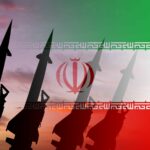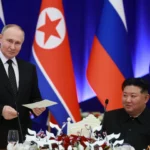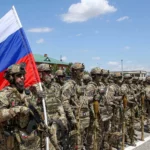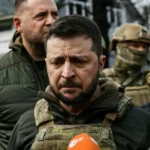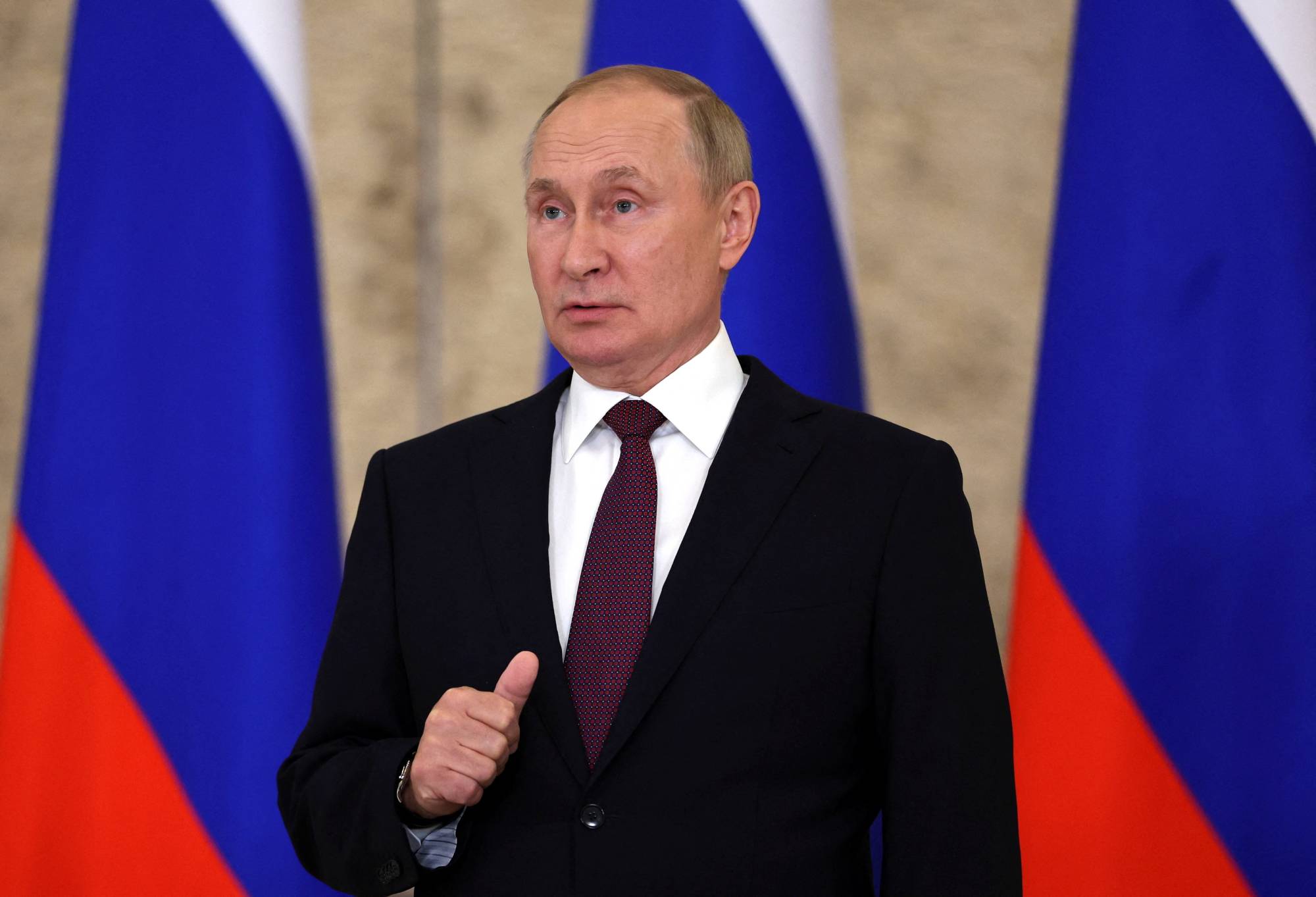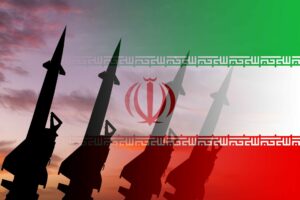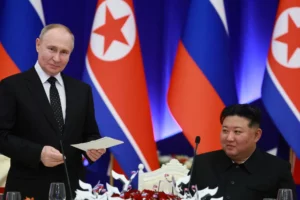Russia’s strategy for its invasion and subjugation of Ukraine has been evolving constantly. The invasion has not gone remotely like Putin and his military leaders would have expected back in February. They have had to continuously change their “theory of victory”.
With winter closing in on Europe, Russia is seeking to hold as much territory as possible while preparing for next year’s campaign. What might Russia’s options be for 2023, and what are the Russian vulnerabilities Ukraine might attack?
These are the features of Putin’s 2022 campaign
In November 2022, Russia’s strategy is comprised of five elements.
The first pillar of the Russian strategy is their strategic narrative that this is a war to resist NATO aggression. This also has a subordinate element about Ukraine being run by Nazis. This influence campaign is important for sustaining support for the war (and Putin) in Russia, but also among other nations. The “NATO aggression” narrative plays well in certain parts of the world, especially the Middle East, South Asia and China.
The second element of Russia’s strategy is their ongoing strategic energy warfare against the West. Putin still hopes he can leverage a cold winter and high energy prices to shape Western public opinion in the northern hemisphere and drive a European intervention that forces a ceasefire.
A third aspect of Russia’s Ukraine strategy is its “strategic bombing” campaign. The Russians are targeting cities, infrastructure and civilians. It is not apparent exactly what Russian hopes to achieve from this campaign. While it is degrading the Ukrainian power network, it is only reinforcing Ukrainian unity in resisting the Russian invaders.
A fourth pillar of Russia’s current strategy is mobilisation. While in some parts chaotic, the Russian partial mobilisation program is designed to replace their personnel losses and rebuild an army for future offensive operations. There is also an industrial aspect to this, which aims to replace lost equipment and improve military manufacturing output.
A final part of Russia’s strategy is to hold the territory already seized by Russian forces. This includes parts of five Ukrainian oblasts and is underpinned by Putin’s September annexation declaration.
Given this strategic context, how might Russian commander General Surovikin be thinking about a 2023 Russian campaign in Ukraine?
What will the Russian campaign look like next year?
The first component of a 2023 Russian campaign will probably be continuing strategic strikes. Beyond power infrastructure, this might include more precision strikes on strategic military targets, particularly logistics and training hubs. But it will also seek to deter foreign investment in Ukraine.
A second element of the 2023 Russian campaign will be military operations, undoubtedly employing many newly mobilised Russian troops, to secure the five oblasts of the Russian annexation declaration. This is an important political and strategic objective. It will incorporate taking territory but also stamping out partisans in those parts of Ukraine already seized.
Integral to this will be attempts to improve the battlefield effectiveness of Russian ground and air forces. This may include attempts to improve logistics and rear area security, the integration of air and ground forces, and operational security.
A third element of Russia’s 2023 campaign will be political activities to “Russify” the territory they control. We have seen this in places like Kherson, and it is a way that Putin feels he can further legitimise his invasion.
A final part of the 2023 Russian campaign may be “economy of force” missions which fix Ukrainians in places so their forces can’t be used in the south or east to conduct offensives or defend against Russia. Russian training and firing missiles from Belarus is an example of this.
How should the West respond?
How might Ukraine and the West respond to such a campaign in 2023?
A key element of any response will be ongoing Western support — equipment, training, financial and humanitarian — is required in the medium term. For Ukraine to prevail, it will take time, resources and strategic patience from the West.
The Ukrainian “strategy of corrosion” — which attacks Russian logistics, C2 and morale — will still be vital. But it will need to adapt as the Russians evolve their campaign. The learning and adaptation battle — on the battlefield and in the strategic information war — is something the Ukrainians must win.
The generation and employment of Ukrainian combat forces needs ongoing support. A larger array of air and missile defence and counter-drone technologies will be required. But it also includes armoured fighting vehicles, munitions, intelligence support and training.
Finally, the Ukrainian strategic influence campaign will remain critical. It is an important part of sustaining Western political and public support for the war. While wars are never pleasant, this is the right war that must be fought now, and it must be fully supported by the West.
The war will not stop in the coming winter. But it will be fought at a different tempo. And it provides political and military leaders an opportunity to plan for what is likely to be a brutal and bloody year ahead.
Mick Ryan is a strategist and recently retired Australian Army major general. He served in East Timor, Iraq and Afghanistan, and as a strategist on the United States Joint Chiefs of Staff. His first book, War Transformed, is about 21st century warfare.
Source : ABC News


